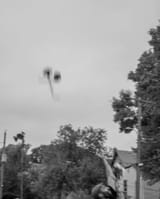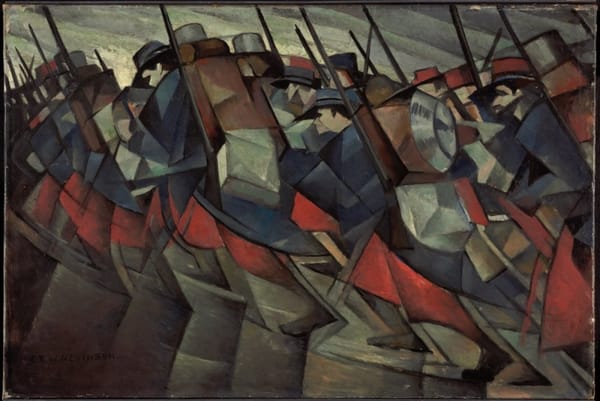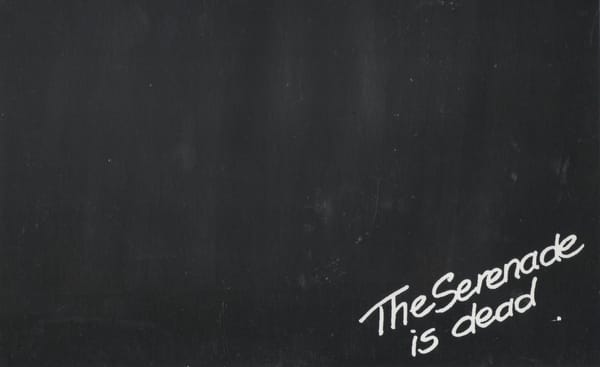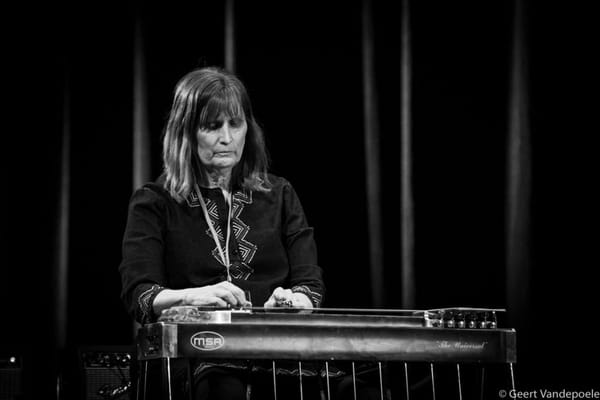Captive Songs
Lukax Santana at Valparaíso
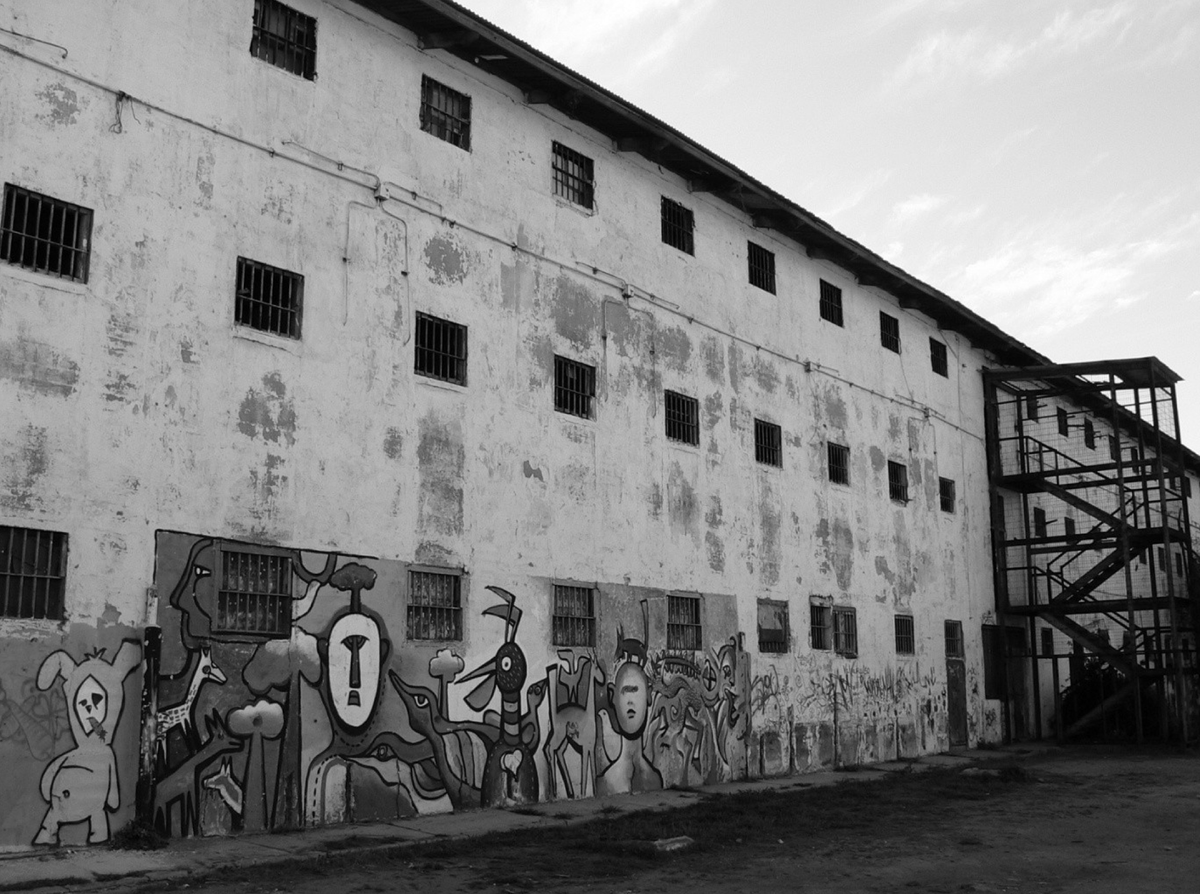
Last month, I wrote about composer Susan Alcorn's moving musical tribute to percussionist and collaborator Lukax Santana, whom she first met on a 2003 trip to Chile. Part of a suite for victims and survivors of the Pinochet regime, Alcorn's musical gift covers considerable ground in little more than seven minutes. A lonesome overture on pedal steel becomes a stately theme in triple time before a prickly patch of group improvisation, showcasing the extended technique of guitarist Luis "Toto" Alvarez—whose own work with Santana preserves a tactile rapport.
Alvarez is a motivating figure in the Chilean avant-garde, and with Alcorn, a co-leader of Septeto del Sur, an ad hoc ensemble convened specifically for the Canto project and including flautist Francisco “Pancho” Araya; percussionist Claudio “Pajaro” Araya; bassist Amanda Irarrázabal; multi-instrumentalist Rodrigo Bobadilla; and violinist Danka Villanueva. Santana himself might have sat in with this company, but has spent much of his time in London, England since his exile from Chile in 1975. Here he has played with Mauricio Venegas-Astorga's Quimantu and the London Improvisers Orchestra, in addition to founding the ensemble Quilombo Expontáneo, an improvising group of South American and British musicians. (Quilombo, Santana explains, "was originally a place where escaped slaves went to live among the indigenous Indian population.")
In an interview with Rob Shepherd, Alcorn describes the eye-opening trip to Chile where she met Santana for the first time, and the backstory to her Canto suite:
I lived in Houston – as I did for twenty-seven years – when I first visited Chile. I was a school teacher and wanted to improve my Spanish because I was teaching [English as a Second Language]. There are little language schools in every country. I went and spent a month in Santiago, Chile. I was already somewhat familiar with the political history of Chile. But the couple who ran the language school were both former exiles. They call them Gaviotas, which means seagulls. They went into exile in Sweden. But the person they put me up with was a wealthy Pinochet supporter who applied a very Americanized kind of culture. I had met a few people who had been exiled, and a few others who had been imprisoned, during the Pinochet years.
I attended a meeting of the survivors of the people tortured in Pinochet’s prisons. I remember walking in, and an older guy there patted me on the back. I felt electricity. An overwhelming feeling came over me. And there was a choir at the beginning of the event that sang “Ode to Joy.” I was just a fly on the wall, I guess. People who hadn’t seen each other in a long time were hugging one another. It was overall very emotional.
While I was in Chile, I also took some lessons on playing Chilean folkloric music on guitar that I brought down there with me. I would also buy video cassettes and CDs in a public square. Through that, I spent a lot of time listening to Chilean folkloric music. Over the years since I’ve also met Chilean musicians and people who grew up in Europe after being exiled. I met someone I became friends with in London, Lukax Santana, who was a prisoner during the Pinochet years. Since being in prison, he has devoted his life to his art, I guess to come to terms with that experience. A lot of that experience of visiting Chile got me further into Chilean folk music.
Alcorn's engagement with this body of song would extend throughout her entire career, demonstrating a deep affinity with the Chilean people and their struggles. Beyond its obvious beauty, this repertory is properly inseparable from an Allendean arc of resistance to fascism, as well as a contemporary movement for socialism and democracy in South America; and her abstract accompaniment of this tradition only attests to its diversity of occasions and forms.
Although Santana appears a key figure in Alcorn's musical and political journey, his own recent music seldom resembles any national idiom such as nueva canción or its close relatives. As a percussionist, Santana specializes in granular detail, albeit at a roar; instrumentalizing all manner of mechanical toys and detritus in acoustically peculiar spaces. And while this materialist tack may seem to evade both common song and reference, his worlds of sound are often placed within concentric spaces of historical concern.

Like Alcorn's suite, Santana's BASE_NICA is a tribute to friends persecuted by Pinochet, but from a deeply embedded standpoint—reflecting upon and revisiting a former place of captivity. BASE_NICA takes its name from a cell of teenage militants from Guillermo Rivera Cotapos High School, with whom Santana helped along Allende's peaceful revolution in the early 70s. After Pinochet's coup d'état, several members of this company were imprisoned at Valparaíso, including Santana himself in 1975. Not only is BASE_NICA dedicated to these compatriots: it was recorded at the former prison site on Cerro Cárcel, where the open layout has been transformed into an "excitingly muscular" cultural centre, according to the Architectural Review.
It's a beautiful, ominous recording, pairing low, machine-like moans with the metallic rustle of found objects. It would be reductive to suggest that this make-do approach derives from the percussionist's experience of forced confinement, but Santana's knack for extracting music from the barest of interiors is known. On a recent recording in the famous "tank" of the Tate Modern, once used for oil storage, Santana creates rhythms by jumping up and down on a drainage cover, musicalizing bare metal and concrete. This piece is similar in texture to the numbered movements of BASE_NICA; but the Tate performance doesn't tempt historical association like the Valparaíso session, which seeks meaning in a former, sonically recollected, place of internment.
With this history in mind, the din assumes a referential depth; subtly scaled drops of water depict imaginary plumbing, as a wide range of concussive metals inescapably evoke the crowded cages where the Pinochet regime once held and tortured over 1600 inmates at a time. Santana's performance eludes such literalism, though it was recorded in the facility's one-time punishment cells; and yet the placement of this recording colours every texture, from the swelling of fraternal voices to eruptions of radio static. In spite of its abstractionist imperative, the suite remains a kind of documentary act, testing the acoustic conditions of Valparaíso and participating in its re-socialization as a haunted cultural hub.
This avant-garde response to the brutal conditions of the Pinochet era can be placed alongside the volumes of song collected by the Cantos Cautivos project—an online archive of the diverse functions of music in Pinochet's detention centres. Conceived in 2014 and supported by the National Memory Archive of Chile, Cantos Cautivos ("Captive Songs") is browsable by individual recollection, or more solemnly, by prison facility, which are cross-referenced to victims of the regime by name where mentioned. At present, the website features stories of musical experiences from 37 of Pinochet's more than 1000 prisons, corresponding to a wide range of encounters and offences.
These accounts are often overpowering to read, and difficult to paraphrase in their plainspoken militancy. In February 1975, for example, room 13 of the Cuatro Álamos camp sang a reconstruction of Canto a la Pampa (Song to the Pampa), a poem by Francisco Pezoa Astudillo set to music by Quilapayún—a flagship ensemble of the Nueva canción movement under Allende and against Pinochet. "We were still in the vestibule of hell," the story reads, "and our conviction was intact. The imperative of justice that had brought us to where we were continued as our banner."
Quilapayún's songbook features throughout these recollections, where nueva canción was never only a discography, but a popular movement. "In Cuatro Álamos," writes a survivor named Scarlett Mathieu Loguercio, "I was profoundly marked by the singing of a current detained-disappeared named Juan Chacón. He sang ‘En qué nos parecemos’, a love song from the Spanish Civil War." The song features memorably on Quilapayún's third LP, but Mathieu recalls a starker, a cappella version from the inside: "It was important to recognise voices because we were blindfolded and our communication happened in the dark. One could only meet up with the people with whom one shared the cell," he recalls. "Through the windows, I heard Juan. He must not have been in good physical condition, but he was in a mood to sing."
Juan Chacón remains among the disappeared, but his voice reverberates within the recollected dark of Mathieu's testimonial—one of many stories in which music thwarts abusive solitude. There's no typical pattern here, but countless arrangements of participants and material. Some prisoners managed theatrical productions and regular rehearsals, with and without permission; others recall singing as a sign and assertion of life amid the cruelest privation. Musician Sergio Vesely describes a conflicting interaction in which a guard asks after a melody, only to boast a week later of having confiscated the record for himself from a resistance fighter's home.
Katia Chornik, a child of political prisoners whose research initiated the Cantos Cautivos project, describes her own attempt to represent the "many languages" by which survivors address themselves to a national trauma. In this respect, the captive songbook makes an aural supplement to the Valech Report of 2004, produced by Chile's National Commission on Political Imprisonment and Torture. Accordingly, this ethnographic evidence is at every moment understood to bear upon the collective consciousness of the Chilean resistance. As nueva canción was instrumental in Chile's socialist moment, its songbook sought an ulterior life amid the ruins of this experiment as well, swelling in the hearts of the people during the political repression of the Pinochet years.
That said, and for all the power in this tradition, the captive songs are not simply manifestoes. The musical encounters logged under this banner include naval songs and Christmas oratory; fits of poetry and bouts of prayer; coerced performances of the national anthem and the constant blare of radio. For all of these distinct purposes, the project hardly supposes a didactic or emancipatory theory of song, where every possible rendition commingles a soundscape of torturous extremity.
A clandestine recording of a musical mass by Ángel Parra, smuggled from the Chacabuco camp.
Music isn't only a reprieve in these accounts, where even the artistic itinerary of Allendean socialism greets a human sensory apparatus primed for pleasure as for pain; and the flowering associations of the voice with freedom nonetheless emerge from, and contrast, a fundamental overwhelm. A survivor of Colonia Dignidad—an outpost of former Nazi officers who lent their skills to Pinochet's government—recalls the use of Tchaikovsky for torture, such that Swan Lake remains unbearable to overhear today. In a separate paper, Chornik notes that the torture house on Irán Street in Santiago was known as "La Discothéque" among detainees because of its weaponization of music; and although Cantos Cautivos only gathers testimony from prisoners, never perpetrators, Chornik speaks to an anonymized member of Pinochet's DINA who describes how police would break into the homes of resistance members in order to use their own record collections for interrogation, exploiting the double-edged fondness of song.
As the misuse of music for torture swaps pleasure with pain, infiltrating the openness of audition to experience, the accounts of Cantos Cautivos necessarily concern not only the familiar functions of song but its antithesis in typically filtered or unwelcome sound, otherwise ambient noise. In Colonia Dignidad, renowned for its audio tortures, "there was a continuous noise from a turbine. This turbine did not serve to produce energy, but to drown out screams, so the tortures could not be heard."
This redeployment of an industrial keynote, transforming an incidental feature of a productive process into a violent means in itself, poses a conceptual challenge to any practice of art that derives its naive content from phenomenological abstraction. If anything, the abuse of prisoners by a range of exceptional states throughout the twentieth-century could be said to have preceded avant-garde designs upon the faculties of sense in the same period. Torture exploits the reversibility of all affection, and traverses intimate associations. The infamous torture facility at Londres 38 in Santiago was known as the "House of Bells" because of its proximity to the Church of San Francisco, for example; taunting nearness with distance and transforming the score of a religiously saturated civic into a measurement of hell.
These are among the immanent, incidental and then cruelly potentiated, features of the total prison architecture that Lukax Santana seems to quote and to arrange by his extended technique. That said, it's unlikely that Santana means to simply reproduce the sonic manifold of his prison experience for aesthetic appraisal. More significantly, the status of the sound that he stirs and directs over the course of BASE_NICA is not that of a recreation, but of so many original micro-events, amassing a heavy downpour. This re-use of an acoustically, and historically, harsh environment is not a virtual attempt upon the past, but a re-production of the space itself, analogous to many such developments in contemporary Chilean society.
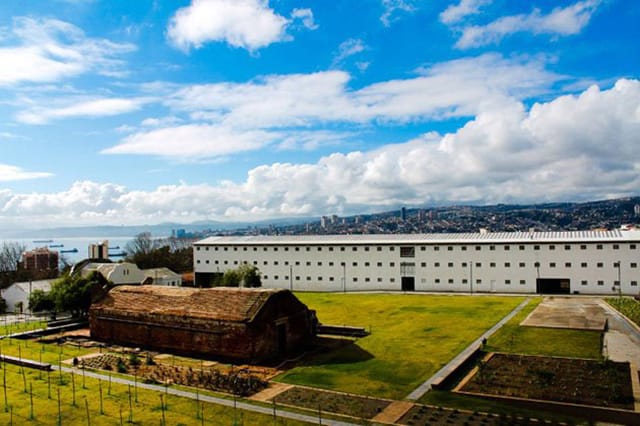
Valparaíso's former prison is a high-profile prototype of this larger recoding of fascist infrastructure, having reopened as a cultural park in 2011. Today, the old torture chambers where Santana and company recorded BASE_NICA operate as dance studios—part of a multifaceted cultural "furrow," in the words of former director and critic Justo Pastor Mellado, given over to art, culture, and community. This has been a widely acclaimed but difficult transformation, and Mellado's theoretically heady redrafting of the prison as a site of play, however beneficial its result, poses some difficult questions as regards longer processes of memorialization. In his publicly circulated and polemical application for the directorship, Mellado centres the institution's work among communities of former political prisoners, proposing to "resignify" the facility as an ongoing work of memory. This social choreography is surely vexed, but no serious proposal for the transformation of this infrastructure can neglect the input of those who suffered for its prior purposes. But how do multiple, and jarring, significations interact within such a space?
Elsewhere, Mellado considers this task of mediation as bears on the Salvador Allende Museum of Solidarity, a former control centre for the junta's elaborate intelligence program. "A decision was made to leave intact an area that was of particular symbolic significance—the room where electronic surveillance equipment had been installed," Mellado explains: "I want to make clear to you the need to think about the institutional articulation that makes this a unique space: in the very same facility, there exist the coordinated components of a memorial, a museum recalling the repressive use to which the facility had previously been put, and a Contemporary Art Museum."
How do these longer commemorative aims alter the status of the contemporary works preserved nearby, and under the same roof? What are the risks of placing scenes of relatively fresh atrocity on an artistic plane, which is to say, within the bounds of subjective evaluation? These are agonizing questions, far beyond the purview of a single newsletter; but of potentially greater interest where the very atrocities for which so many of these repurposed sites are known transpired by highly subjective, and plausibly artistic, means.
Extracts from Sedimento (directed by David Legue, Eryn Rosenthal, and Cristóbal Racordon; with sound by Lukax Santana.)
In certain repressive situations, one could even suppose a troublingly direct relationship between the volume of political silence and the general artistic clamour. But in a re-democratizing Chile, a longer tradition of resistant song seems to have metamorphosed into a myriad, amply occasioned form of political participation—less didactic than directly attendant. During the nation-wide movement to replace Chile's Pinochet-era constitution in 2022, artists played a visionary and consultative role, advancing robust social practices within the ferment of the estallido social. (Santana, for his part, collaborated with an improvising dance troupe on a work of deep civic concern, blending oral history and extemporaneous sound; see above.)
This process is still underway, and not only where a draft constitution of far-reaching implication was voted down in September 2022. Chilean opinion is still riven by the question of socialism, and its civic institutions shot through with remnant shards of fascism. These are not artistic questions, then, but matters of political struggle and class antagonism, to which art can act accomplice. As poet and artist Cecilia Vicuña puts it, the search for form in art is directly analogous to the search for structure in society; but this latter form is easier to name than to achieve ("it's obviously socialism"), whereas artistic form is harder to prescribe, but "easier to do."

In this respect, and with reference to the specific locations of its instantiation, we fellow travellers could start to think of new Chilean song not as a canon or popular scripture—though it fulfills these functions too—but as so many soundings in situ, attesting to the physical experiment of freedom. Such an adjustment may help to guide us through so many other (de- or re-) fascizing moments, where art is both object and subject of state infiltration. As importantly, perhaps it can assist us in our own search for structure, never to repeat, nor to forget, that of the recent, present, past.
Listen to BASE_NICA on Radio State (March 24, 2025).

